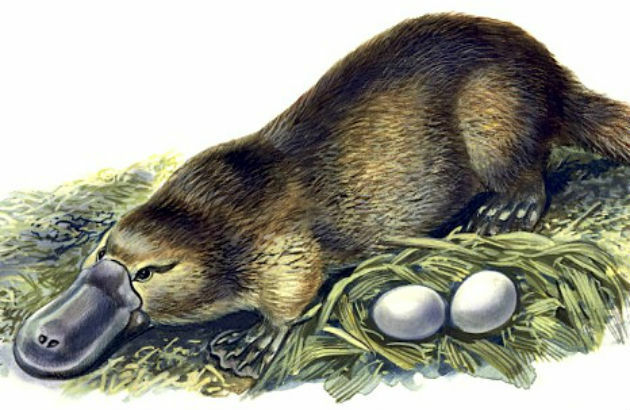You mammals are vertebrate animals belonging to the Eukaryota Domain, Kingdom Animalia, Phylum Chordata, Subphylum Vertebrata and Class Mammalia.
It is estimated that there are more than 5,000 species of mammals, found in almost all biomes on the planet. They are terrestrial, aquatic and flying animals like bats.

characteristics of mammals
Learn about the main characteristics of mammals:
Habitats
Mammals are highly adaptable beings and can be found all over the planet.
This is because many mammals live in societies and care for their offspring until they become independent.
In addition, many mammals were domesticated by man and now live with them.
body aspects

Mammals are characterized by the presence of hair on the body and mammary glands in females.
The amount of hair on the body varies from species to species. At whales, for example, have very few hairs around the muzzle, and the skin is predominantly smooth.
The fur works as an insulator, making it difficult to dissipate heat from the skin's surface to the environment. This feature allows the body temperature of mammals to remain constant.
They still keep their body temperature constant thanks to their skin, which is made up of two main layers (epidermis and dermis), where sebaceous and sweat glands are found that help regulate temperature.
Its body is supported by a fully ossified endoskeleton with a trunk head and four legs. (except cetaceans) with up to 5 toes, in quadrupedal species (most) and other bipedal species (kangaroos and men).
food
Mammals have a variety of feeding modes. The presence of teeth helps them to explore different types of food.
According to the type of food mammals are classified into:
- Carnivores: They have well-developed canine teeth and their diet is based on the consumption of protein and lipids. Examples: fox, dogs, jaguars and lions.
- Herbivores: They have rudimentary or absent canine teeth and well-developed molars. They feed on vegetables and have adaptations for cellulose digestion. Examples: hippopotamus, giraffe, ox, kangaroo and zebra.
- omnivores: They have the most diversified diet, feeding on animal and vegetable sources. Examples: bear, primates and pigs.
Respiratory and Circulatory System
The trunk of mammals has ribs attached to the sternum, forming a rib cage that gives them respiratory movements due to the presence of the muscle. diaphragm.
The breathing of mammals is exclusively pulmonary, ie, occurs through the lungs. This is true even with aquatic mammals.
The circulatory system is closed, including the four-chambered heart. Also, there is no mixing between venous and arterial blood.
Nervous system
The mammalian nervous system is highly complex and the most advanced of all vertebrates.
Furthermore, the brain of mammals is proportionally larger than that of other animals, allowing for greater intelligence.
reproduction

In mammals the sexes are separated, that is, there are males and females. So the reproduction is sexual.
Most mammals have defined reproduction periods, that is, times that favor the origin of offspring.
Fertilization of mammals is internal. After birth, puppies receive breast milk from the mother's mammary glands.
The gestation time and the number of offspring originated in each reproductive cycle varies according to the species. For example, possums can give birth to up to 13 pups in a single litter.
classification of mammals
Mammals are subdivided into several groups, according to some of their characteristics.
1. Environment in which they live:
Mammals are classified into aquatic and terrestrial.
Examples of aquatic mammals are: orca whale, manatee, Dolphin, humpback whale, blue whale, porpoise, sea lion, otter and seal.
Examples of terrestrial mammals are: human, dogs, giraffe, Lion, tiger, monkey, ox, bear, anteater, fox, cat, jaguar, camel, sheep, Ocelot.
There are also bats that are aerial mammalian animals. O Polar Bear it is also a mammal, but with swimming ability.
2. Reproductive patterns:
Mammals are also differentiated by the way in which gestation develops.
There are placental mammals, in which the entire pregnancy takes place inside the mother's body. And the marsupials, which part of pregnancy is inside the mother's body and after that, the offspring develops inside a bag called a baby carrier.
There are still mammals that lay eggs, known as monotremes. However, the egg remains for a long time inside the mother's body, where it receives the nutrients necessary for its development. An example of a monotreme is the platypus.

Curiosities about mammals
- Dogs, cats and rats do not have sweat glands.
- Mammals are the only animals with the ability to play.
- The blue whale is the largest mammal on the planet, while elephants are the largest terrestrial mammal.
- The only mammals capable of flying are bats.
- The smallest mammal in the world is the Kitti bat, it weighs around 1.5g.
- Mammals arise from an evolution of a group of reptiles called therapsids, which lived in the Triassic period (225 M.a. ago).
- Sleeping hours for mammals: Whale - 1 hour; Ox - 4 hours; Dog - 10 hours; Horse - 3 hours; Elephant - 3 hours; Seal - 6 hours; Cat - 15 hours; Giraffe - 2 hours; Dolphin - 10 hours; Lion - 18 hours; Bat - 19 hours; Pork - 8 hours; Laziness - 20 hours; Rat - 13 hours; Zebra - 3 hours.


